Our satellite tagged birds have returned
2017.06.09. 11:51
Roller populations are radically declining throughout Europe, and the species is now extinct from many Western European countries. The population within the Carpathian Basin is relatively stable, and thus its protection is of outstanding importance for the survival of the species within the European Union.
The migration routes and wintering grounds of our rollers were almost completely unknown. The traditional method of ringing and recapture only provided a small amount of data over the last 100 years, which is clearly not enough if we want to understand the threats rollers face during migration and wintering.
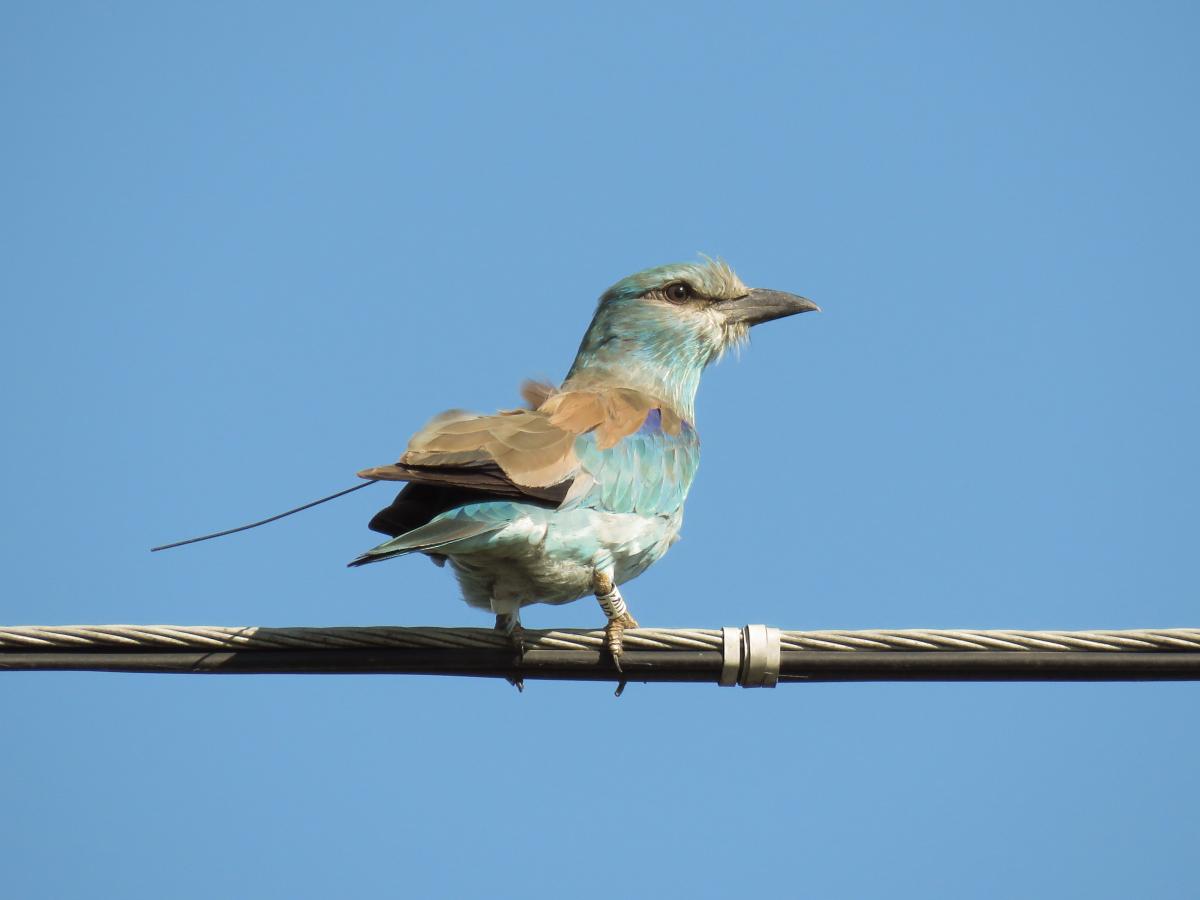
Satellite tagged roller (Fotó: Balázs Csibrány).
Rollers only spend about four months in Europe each year, the majority of their time is spent on spring- and autumn migration, and wintering in Africa. During the almost 10.000 km long journey they face many challenges and a large number of birds perish due to illegal hunting, degradation of stopover and wintering sites, food shortage and global climate change. Better understanding the exact location of the migration routes could help us reduce these threat factors and could potentially lead to attaining legal protection to the most important wintering sites.
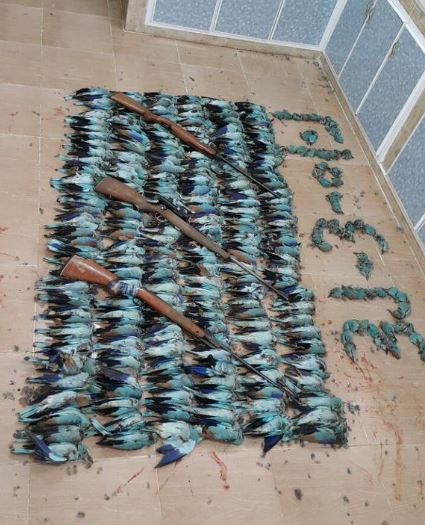
Illageal hunting still has a negative affect on roller populations (Source: www.bou.org.uk).
Experts from BirdLife Hungary (MME) applied satellite transmitters to 4 adult rollers in the summer of 2016. The satellite tag weighs only 4.5 g, less than 5% of the body weight of the birds.
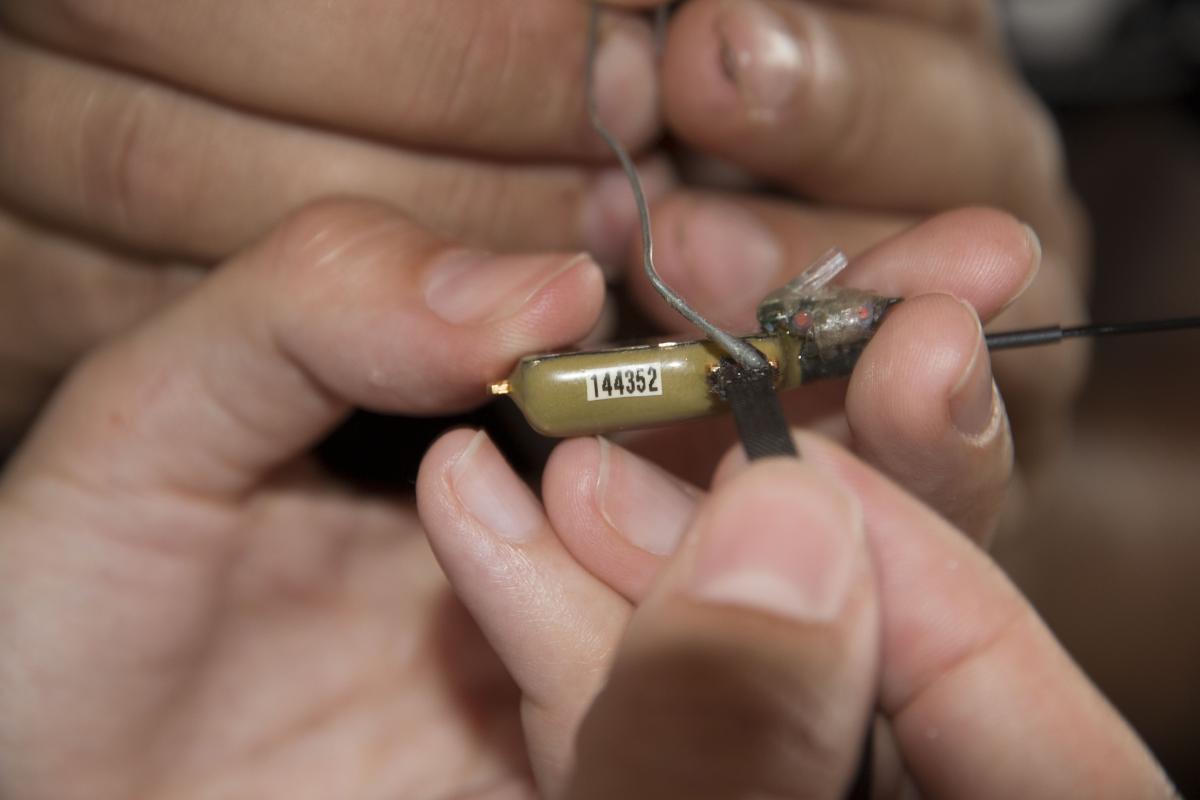
PTT satellite tag (Fotó: Béla Tokody).
After a short while, we lost track of two out of the four birds: Bukfenc and Fehérlófia. It is possible that the satellite tags stopped working, but even more likely that the birds themselves perished on the way as migration is a hazardous activity.
The other two birds, Artúr and Eleven, however just made their way back to the breeding grounds. Their routes were duly tracked at all times. Both individuals left Hungary at the beginning of September and only a week later their tags were sending their signals 4,000 km away from the sub-Saharan savannah. This vast expanse of open woodland provides the rollers with a bounty of prey following the late summer rains. The birds made the best of their two-month stopover before leaving at the onset of the dry season. The birds advance at differing speeds crossing adverse habitats such as deserts or tropical rainforests without stopping but spending more time at appropriate foraging sites.
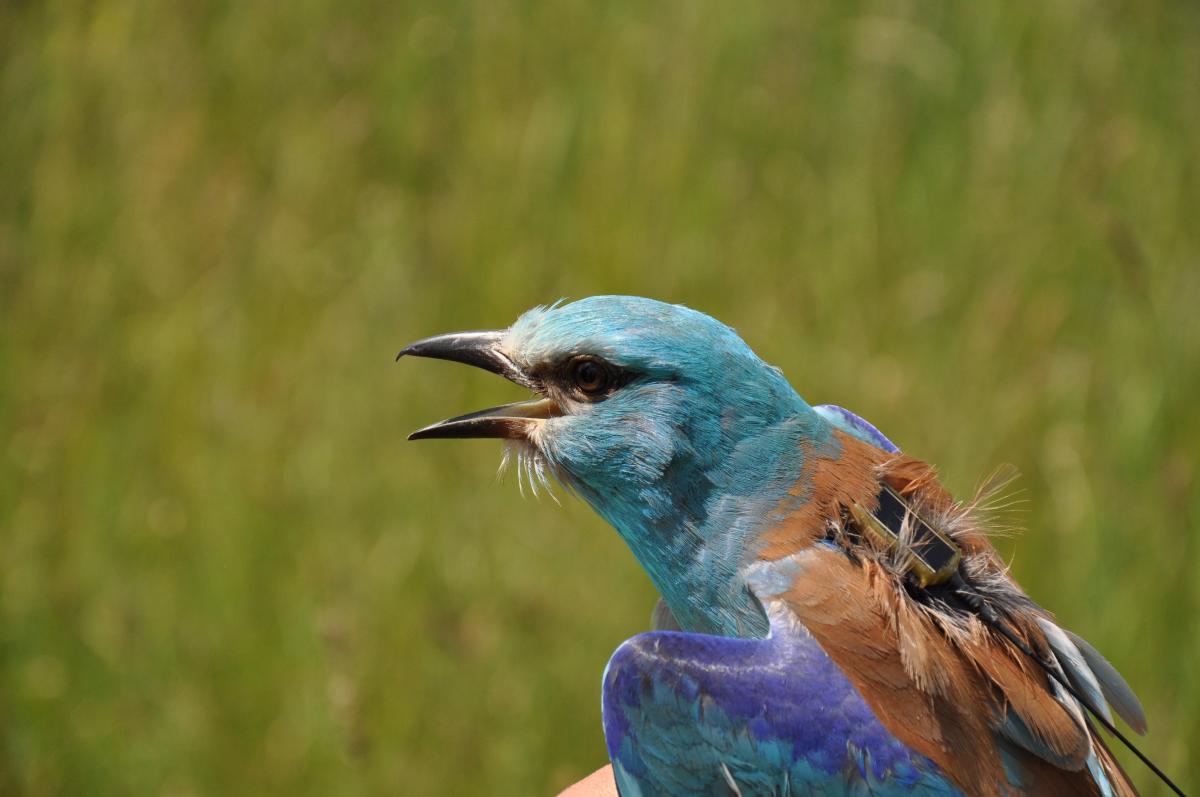
PTT tag on a bird (Fotó: Csaba Lendvai).
Artúr and Eleven resumed their southward journey at the beginning of November. They crossed over the Equatorial rainforests within a few days but their speed dropped again on the savannahs of the southern hemisphere. They reached their final destinations by the beginning of December just north of the Kalahari Desert, in the territories of Namibia and Botswana where they stayed until mid-March.
According to the signals from the tags, the spring and autumn routes of our rollers differ remarkably: they do a so called ‘loop migration’ that is typical to long-distance migrants wintering at sub-Saharan locations. The spring route lies about 1000-1500 km to the East from the autumn route as the birds crossed over Saudi Arabia, Iraq and Syria on their way back from Africa.
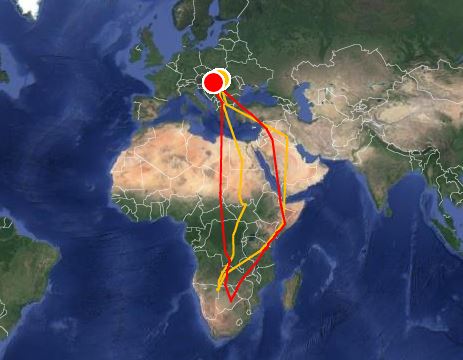
The migration of "Artúr" and "Eleven" (Source: http://satellitetracking.eu).
With the help of satellite transmitters, the exact route and the main stopover sites of the Carpathian Basin’s population will be understood. Birdlife partner organizations of Serbia, Bulgaria, Cyprus and Israel also take part in the project. Based on data evaluation, the newly discovered stopover sites will be mapped by experts of local organizations in order to reveal threats for rollers. Given the threatening factors, partner organizations can take the first steps to protect rollers on their flyways by raising the awareness of the local community and decision makers.
Artúr arrived on the 21st May, while Eleven reached Hungary on the 30th and they could be observed within their usual breeding grounds ever since.
Apart from getting to know the exact migration route, we’ve also learned that the 7000 km long journey takes a month longer in the autumn (3 months), than in the spring (2 months). The main reason for this difference is that the birds are trying to reach their breeding grounds quickly, in order to occupy the best territories and raise healthy and strong chicks.


















